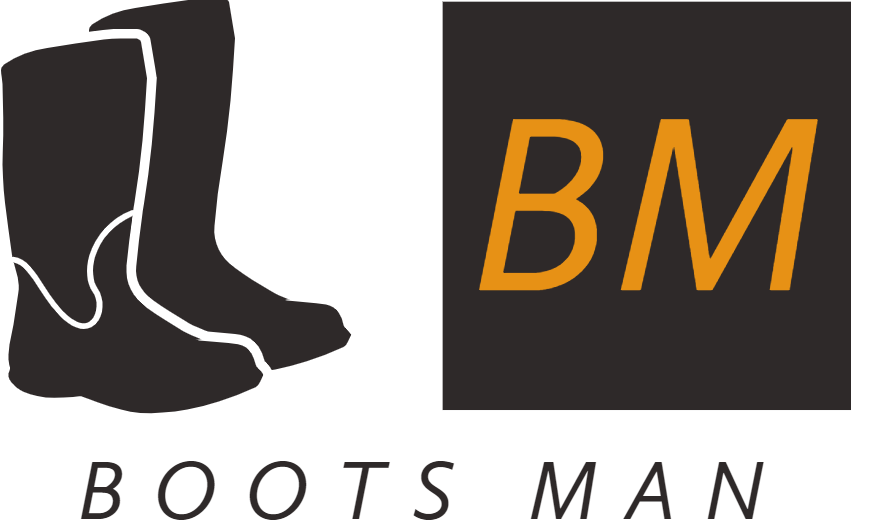Are you a big-footed guy struggling to find a reliable pair of work boots that fit? If yes, this article is for you. We will explore the various options available for larger foot sizes, so you can find the perfect pair of work boots for your needs.
Be ready for comfort and durability!
This complete guide will provide information on the types of work boots available for people with larger-than-average foot sizes. With the right footwear, any job can be done safely and efficiently so finding a boot that fits your needs is essential.
We’ll cover the different features that make up a good pair of working boots, construction tips to look for, as well as key considerations when buying your new footwear. Additionally, we’ll highlight some of the popular brands and models available on the market today.
By understanding these elements and knowing your foot size, you can make an informed decision about which boot is right for you.
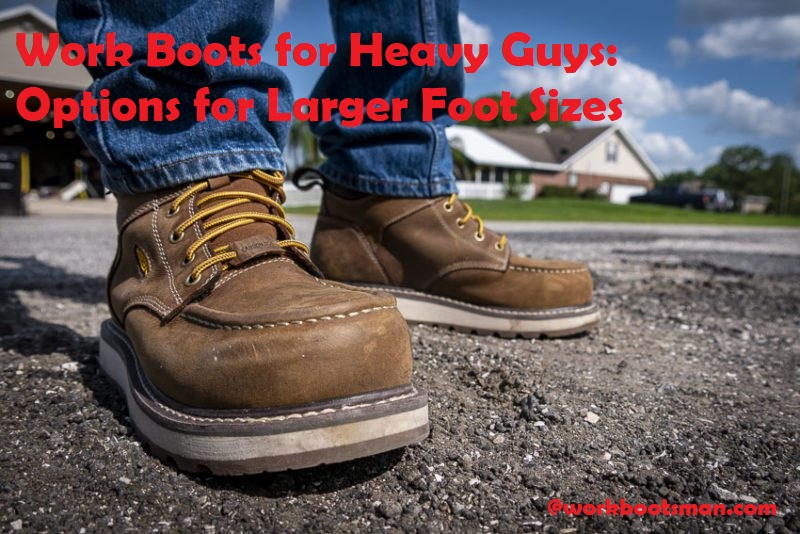
Explanation of why work boots are important
Work boots are important for a variety of reasons. They provide protection to the feet and legs by enabling them to withstand a range of hazards that may be encountered in most working environments including slippery floors, sharp objects, harsh chemicals and extreme temperatures. Furthermore, work boots can also help to improve movement when performing specific manual tasks that require gripping or maneuvering heavy objects due to the thick sole and cushioning support provided. Additionally, well-made work boots are produced with specialized features specifically tailored for each individual application such as steel toe caps for heavy industry workers or waterproof layers of PVC or rubber for those employed in wet conditions.
Ultimately, investing in quality work boots helps to ensure optimal safety and comfort during manual labor which can help reduce any associated risks of injury and maximize performance levels at the end of each shift.
Introduction to the topic of work boots for heavy guys
Having larger sized feet can make it difficult to find the right pair of work boots that are both comfortable and durable, as manufacturers often focus on smaller sizes when producing work boots.
This guide will cover everything you need to know when searching for work boots for those with larger feet. Specifically, we’ll explain why fit is so important for comfort and describe the differences between different types of materials used in boots. We’ll provide reviews of some great options for heavy guys in each material, highlight factors to consider before buying, and provide a few tips on how to break in new shoes fast.
Ultimately, this guide should give you all the information you need to find the perfect pair of sturdy, comfortable work boots with larger foot sizes.
Explanation of the importance of options for larger foot sizes
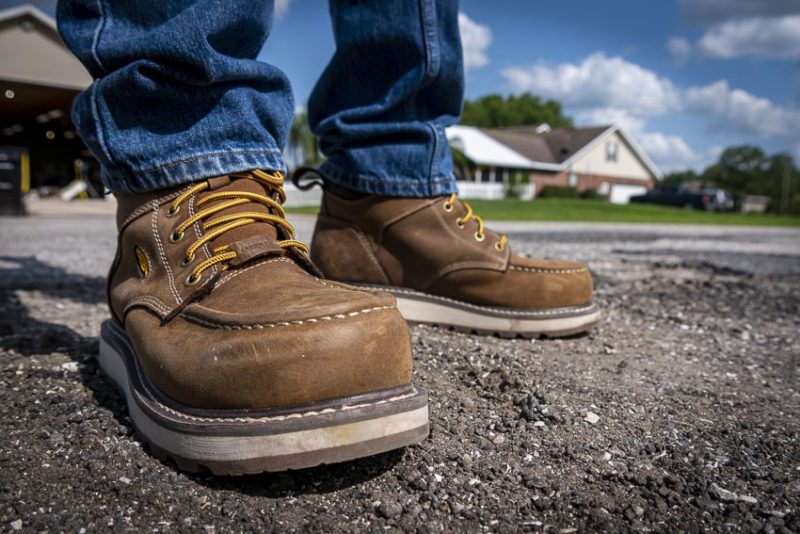
Finding a pair of work boots that fit can be a challenge, especially if you have a larger foot size. Many manufacturers and retailers focus on shoe sizes up to a 13 without an understanding that workers need other options. Forging boots in larger sizes is also more expensive for companies, which can make it difficult for individuals with bigger feet to find appropriate footwear for the jobsite.
The importance of sourcing boots in larger sizes should not be underestimated. Workers who do not have access to the correct work boot size risk experiencing foot pain, which can lead to chronic conditions over time. Wearing the wrong size boot can also increase the risk of slipping or tripping accidents due to poor fit and inadequate support and cushioning. Additionally, having the correct size boot provides extra protection against exposure to outside elements such as water, chemicals, and sun exposure causing premature wear and tear on footwear as well as potential health risks related to prolonged contact with any external elements.
Ultimately, it’s essential that everyone is able to access safe and comfortable work boots – no matter their foot size – so they are able to perform their duties confidently and be 100% certain that their security is always their top priority. Providing options for larger foot sizes promotes equality of opportunity by recognizing those who may feel excluded by traditional cycles of sizing offered at most retailers or suppliers while also encouraging safety at work across all industries.
Overview of the guide
This guide provides an overview of the various types of work boots available to those with larger foot sizes. It takes into account all factors, from age and occupation to foot shape and work conditions. We’ll review features such as air cushioning, metatarsal protection, ankle stability, sole construction, sizing and fit, traction, moisture wicking liners and more.
No matter your size or weight level, proper fit is essential for comfort and safety. It’s important to measure both feet for length and width as feet are rarely of equal size. Experts also suggest that you measure your feet while standing as feet tend to be slightly bigger while doing so. Additionally, it’s important to choose the right boot widths; too narrow creates blisters on the sides of your toes while too wide creates pressure on bunions if you have them. For those requiring extra-wide sizes like EE or even EEE shop specialty sites that carry these bigger sizes. Lastly consider insoles with built in arch support designed specifically for heavier people who put more strain on their feet when working long shifts than non-overweight people do.
Factors to Consider When Choosing Work Boots for Heavy Guys
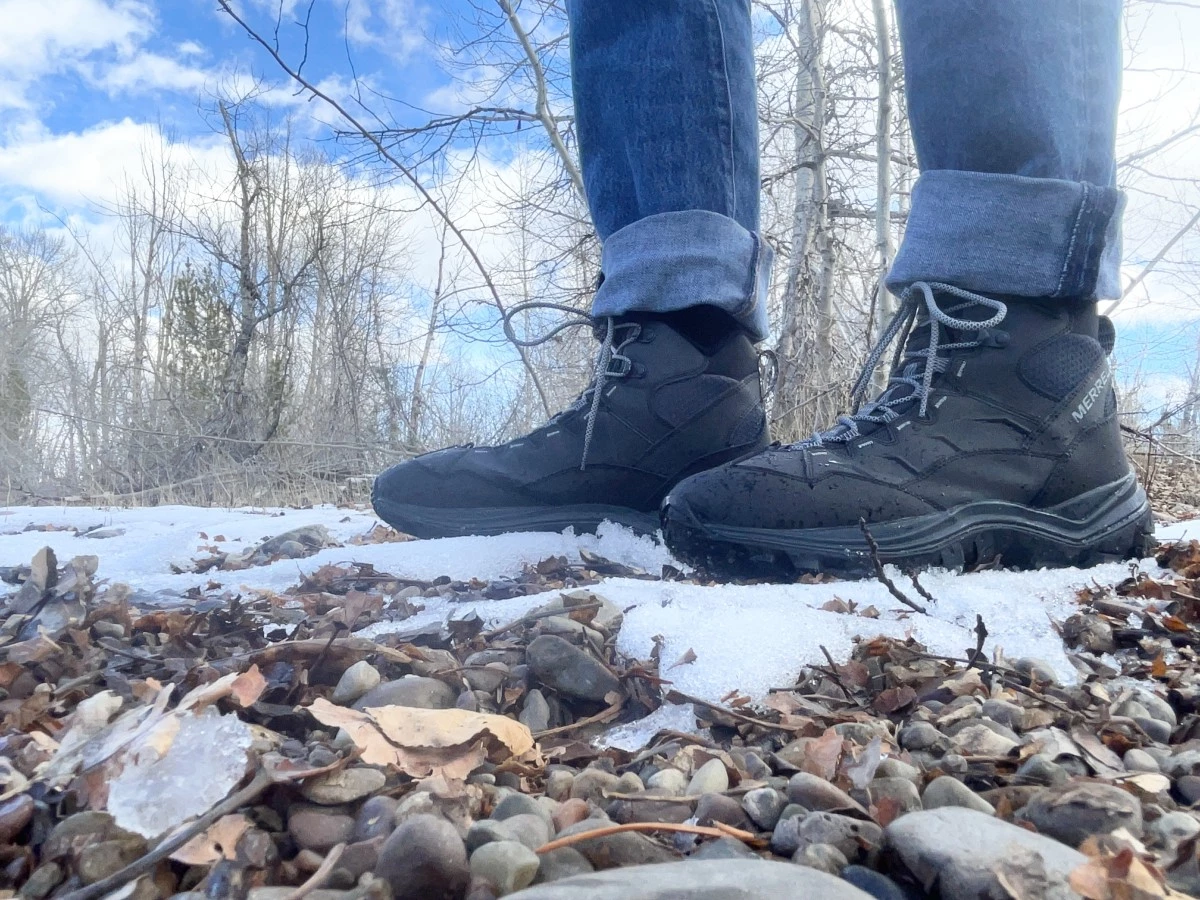
When looking for work boots, it is important to consider the weight of the wearer. Heavy guys require more protection and padding due to their increased size and weight. To ensure that the work boots are durable enough to withstand your daily wear and tear, you should look at features like toe guards, extra shock absorption, and sturdy construction. Additionally, if you plan on working in wet conditions, waterproofing is a must-have feature as well.
A good fit is essential for any type of footwear, especially when it comes to work boots for heavy guys. A properly fitting pair will provide support and comfort throughout your shift, so try them on before you buy. Make sure there’s enough room in the toe box to allow comfortable movement without straining your feet or cramping up during prolonged periods of work on a regular basis. Bigger shoe sizes often have thick insoles which cause minor discomfort at times due to a lack of space inside the boot or shoe – make sure there is room within the boot for those extra-thick insoles!
To make sure you are getting a quality product that will last through heavy use and hard conditions look for leather uppers with double or triple stitching at stress points –especially around the toes – as well as steel reinforcements in places like shanks that get subjected to heavy loads over time; these reinforcements provide additional cushioning support when working on concrete floors or harder surfaces like stones etc. Last but not least look for slip resistance outsoles as they help prevent unexpected slips and falls, which can be dangerous with heavier individuals.
Weight capacity
When it comes to finding the right pair of work boots for heavier guys, one of the key considerations is to determine the amount of weight a certain pair can handle. This needs to be taken into account when purchasing a boot that will be used for working in dangerous and hazardous conditions. Generally speaking, work boots for those guys with larger foot sizes must be able to endure higher weight and force capacities than your average shoe. The capacity will depend largely on the type and style of boot but there are some general parameters that should be considered when making a purchase.
Weight capacity is measured in pounds per square inch (PSI) and it determines how much pressure a boot can handle before breaking down or tearing in any area. Many instant footwear stores have their own ‘weight capacity’ rating system that can be used by customers as a reference when purchasing their work boots. If you do not have access to this rating system then it is important that you take note of any information regarding the PSI on the product so you are aware of what kind of load your new boots can take while out on site or other places where danger awaits.
Arch support
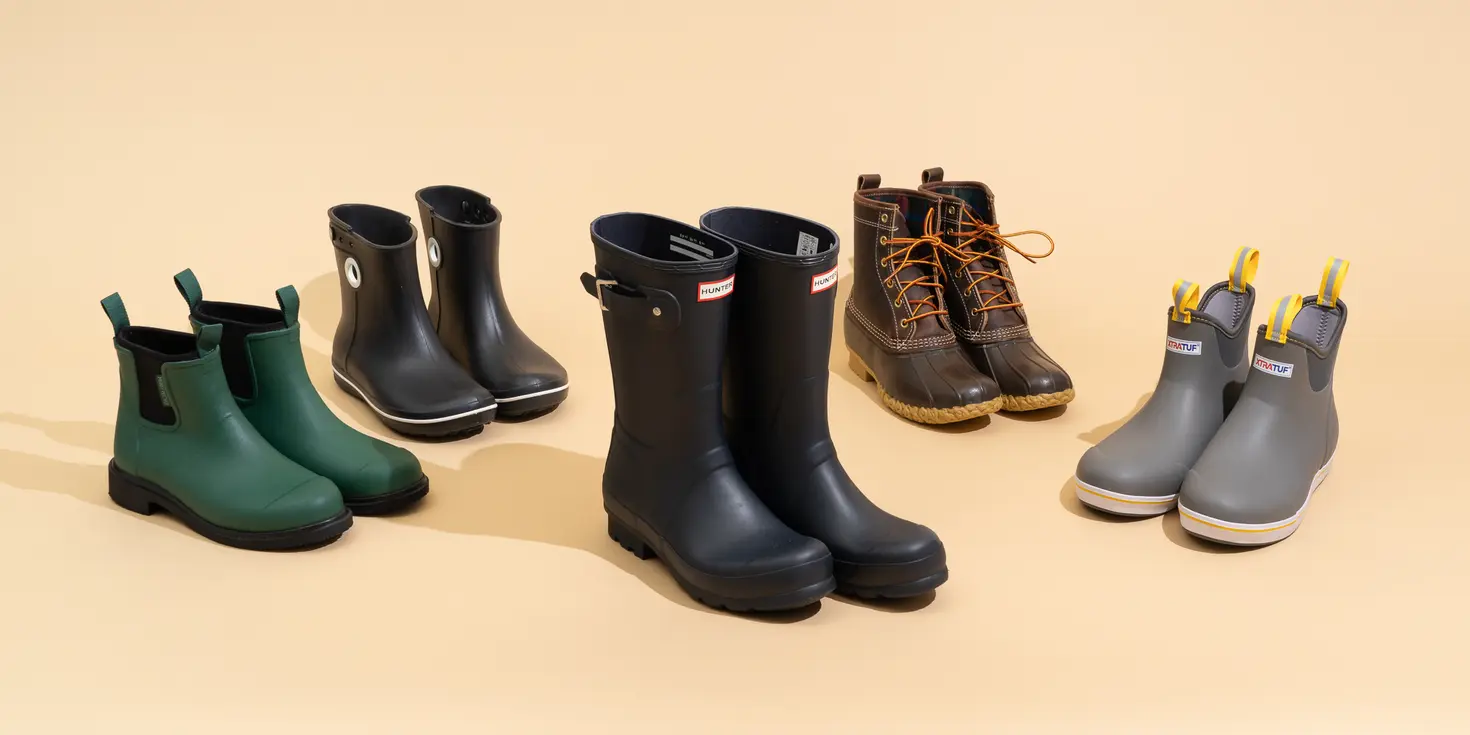
Arch support is an important factor for all heavy guys who work in environments where their feet bear considerable loads and pressure in the course of their duties. An appropriate arch support provides much-needed comfort and prevents excessive fatigue, which can build up over time if poorly supported.
The best boots for hefty men typically feature a removable footbed that combines with an ergonomic midsole and an adequate Achilles notch that makes it easy to adjust the fit and take your foot into consideration when selecting the right footwear. When selecting a pair of boots, make sure they offer some degree of arch support that’s suitable for you.
In addition to adequate cushioning, most sturdy shoes also offer additional features such as padded collars to protect your heel when walking or standing on hard surfaces all day long. Furthermore, several manufacturers integrate extra sole padding into their designs too, with many using softer materials like foam rubber or EVA combine with harder components like gels or even plastic plates for shock absorption and impact protection.
Ankle support
Ankle support is an essential component of work boots for heavy guys. The best way to provide ankle support depends on the type and level of activity that you will be performing in the work boots. For instance, if you will be engaging in lots of heavy, physical labor, then a higher-top work shoe with more rigid material around the ankle is ideal. However, if you will not be doing a lot of physical labor and are looking mainly for protection from minor pricks and cuts while working outdoors, then a lower-top shoe with flexibilitiesaround the ankle can meet your needs.
Consider the quality of craftsmanship when selecting your boots. Quality materials and sturdy construction are crucial for providing long-lasting protection and comfort for busy feet. Make sure to read reviews on products to get an idea of how well constructed those particular shoes are before purchasing them. Additionally, it is important to check for customer warranties so that you can get repairs or replacements should any issue arise due to lack of quality craftsmanship. Finally, test out how comfortable and supportive your shoes feel by walking around in them both barefoot and with socks before finalizing your purchase decision.
Toe protection
Heavy guys may have difficulty finding the right size and style of work boots for their needs. At the same time, the requirement of protective toe-caps can add another layer of difficulty to the selection process. It is vital that anyone doing work in a hazardous environment wears protective-toe boots, regardless of size. The good news is, there are many options available when it comes to toe protection.
Steel: Steel safety toes are lightweight and offer superior impact resistance up to 75 lbs. Traditionally they are cut into three corners (at angles) on the toe box and cover one third on each side and both sides at the back. Steel-toe boots with special punture resistant plates, such as Kevlar or Vibram may also be used for increased safety against sharp objects like nails or metal shavings.
Aluminum: Aluminum safety toes provide flexibility and superior protection against impacts up to 100lbs with higher temperatures (up to 500 degrees F). This type of toe cap is generally lighter than steel toes but not as durable norpunctureproof as steel any materials approved by ASTM standards standard in construction, transportation and manufacturing industries across North America.
Soft Toe: Although not offering an immediate impact protection like steel or aluminum, soft-toe work boots can be a good choice for heavy guys who need additional width in their sizes but does not require heavy industrial working environment protecting their feet from secondary hazards such as abrasion or sharp objects during long periods of time . Soft toe protectors will conform around the foot more closely due to its lightweight material construction making it quite comfortable compared to other heavy duty materials while still satisfying OSHA regulations standards in most worksites.
Conclusion
In conclusion, if you’re a heavy guy looking for a comfortable and supportive work boot, don’t forget that there are plenty of options out there, no matter what your size. With careful consideration of your needs and budget, you can easily find a pair of shoes that provide the comfort and protection you need.
For superior protection and comfort, consider upgrading to composite toe boots which are not only strong but also lightweight. If you choose leather boots they should have triple stitching with moisture-wicking lining to prevent sweat buildup. Also pick one with an extra cushioned insole and tapered rubber outsoles for maximum safety and comfort against hard surfaces.
Finally, keep in mind that any good work boot should be adjustable enough to accommodate thick socks or orthotics as well as providing enough room for those toes to wiggle!
FAQ’s
Do you get a size bigger in work boots?
It’s recommended to get work boots in a size bigger than your regular shoe size to accommodate thicker socks and foot swelling during long work hours.
What is a heavy work boot called?
A heavy work boot is commonly called a logger boot, safety boot, or steel-toe boot.
What is the widest boot?
There are various brands and styles that offer wide boots, but the Timberland PRO Men’s Pitboss Steel Toe is known for its wide toe box.
Should work boots be bigger or smaller?
Work boots should be a size bigger than your regular shoe size to ensure comfort, prevent blisters, and provide enough room for thicker socks.
How do I know my work boots size?
You can determine your work boots size by measuring your feet using a Brannock device or by trying on different sizes and brands to find the best fit.
When you buy boots half size bigger?
You may want to buy boots half size bigger if your feet are in between sizes or if you plan to wear thicker socks.
How do I stop my feet from hurting in my work boots?
To alleviate foot pain in work boots, try using insoles or cushioning inserts, wear proper socks, adjust the laces for a secure fit, and take breaks to rest your feet.
What makes your boots bigger?
Leather boots can stretch and become slightly bigger over time with regular wear and conditioning, but it’s not recommended to rely on this method to adjust the fit significantly.
Is it better to buy shoes bigger or smaller?
It’s generally better to buy shoes bigger than smaller to prevent discomfort and blisters. However, different brands and styles may have varying sizes and fits, so it’s important to try on shoes before purchasing.
How big is too big for boots?
Boots that are too big may cause blisters, discomfort, and increased risk of falls. A general rule of thumb is to have enough room in the toe box to wiggle your toes and a snug fit around the heel and instep.
See Also :
- Best boots for tree work 2023
- Best boots for warehouse work 2023
- Best boots for yard work 2023
- Best carhartt work boots 2023
- Best carpenter work boots 2023
